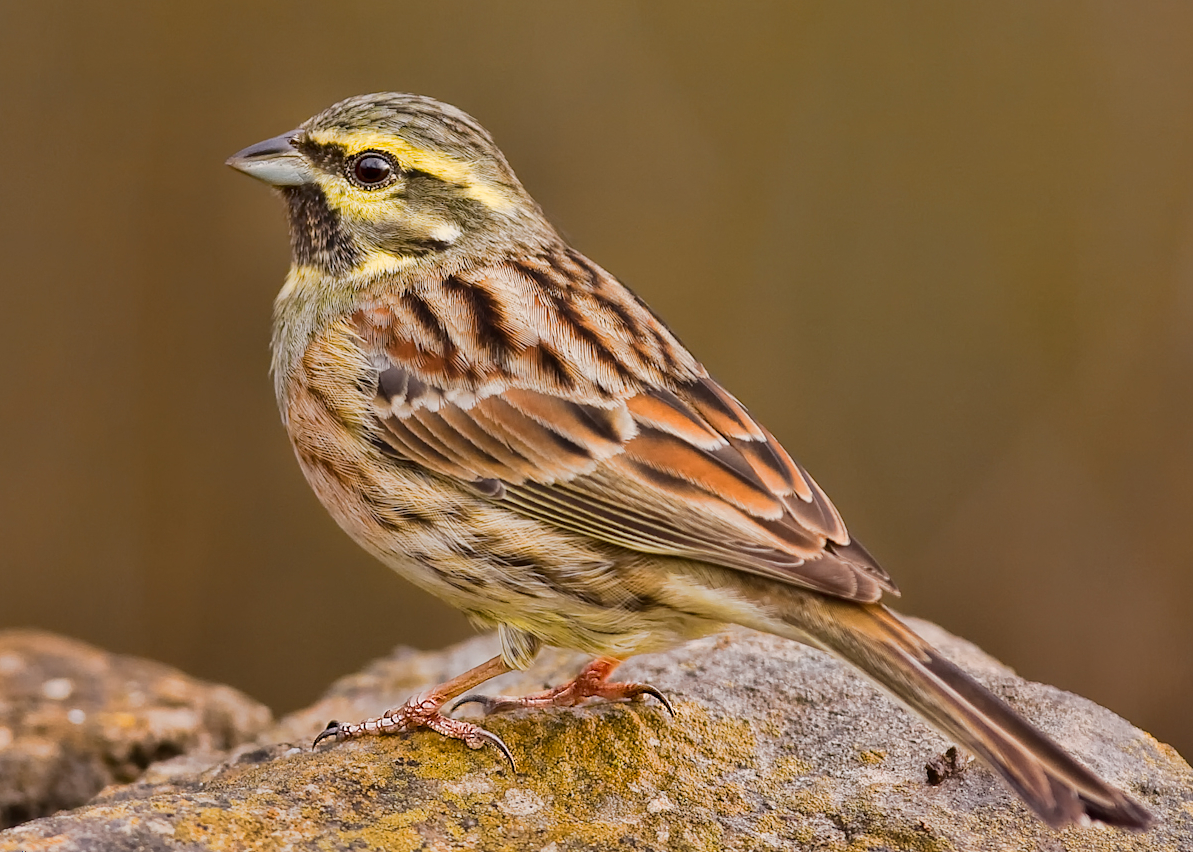Cirl bunting
(Emberiza cirlus)

Description
The cirl bunting is like a small yellowhammer,15-16.5 cm in length (wing-span 22-22.5 cm) with a thick seed-eater's bill.The male has a bright yellow head,with a black crown,eyestripe and throat,and a greenish breast band across its otherwise yellow underparts,and a heavily streaked brown back.The female is much more like the yellowhammer,but has a streaked grey-brown rump and chestnut shoulders.The monotonous song of the cock is rattling trill,like Arctic warbler or the terminal rattle of lesser whitethroat.In the summer their natural food consists of invertebrates for example grasshoppers and crickets to feed their chicks.In the winter they feed on small seeds from over-wintered stubbles,fallow land,set-aside,and the over-winter feeding of stock with grain or hay.They tend to feed in flocks during the winter.The nest is on the ground,within dense cover such as that provided by thick hedgerows and scrub.The ideal scrub is said to be blackthorn,hawthorn,bramble and gorse.The breeding season runs from April until mid-September,potentially having three broods in total.They are sedentary in nature and will often travel only 250 m from their nests to forage in summer,and up to 2 km in winter to find stubbles.Two to five eggs are laid,which show the hair-like markings characteristic of buntings.The ideal farmland habitat is a mixture of grass and arable fields,divided by thick hedgerows with pockets of dense scrub.They can tolerate a certain degree of urbanisation,and are found in green spaces in towns and cities,even Rome.
Taxonomic tree:







